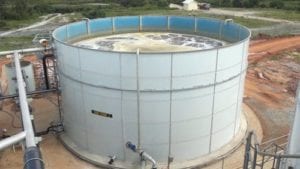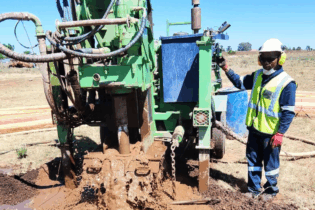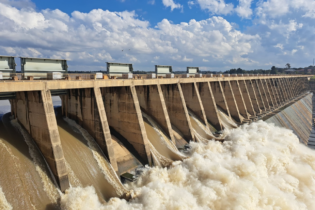by Arish Sohan, laboratory analyst, and Jody Naicker, technical assistant, Talbot & Talbot Laboratories.
Any form of wastewater produced from process operations such as manufacturing and agriculture are referred to as “Industrial wastewater”. This, however, does not include domestic or sanitary wastewater. Further to this, all industrial wastewater must be classified in accordance with the National Environmental Management Waste Act (Act No 59 of 2008). This classification is supported by testing wastewater samples in a laboratory and using the results to determine if the effluent is within acceptable limits for discharge into a public sewer system. Industrial wastewater that does not comply with the discharge specification must undergo a pretreatment process. The aim of the pretreatment process is to remove harmful pollutants such as oils and fats; dyes; detergents; and organic chemicals from the industrial wastewater. Pretreatment plants are designed and built based on analytical laboratory test results for the particular wastewater type. The analytical laboratory tests include analyses such as chemical oxygen demand (COD); suspended solids (SS); conductivity (EC) and various elemental metal concentrations. The effectiveness and efficiency of a wastewater plant is monitored by plant operators using online process data as well as laboratory test results from samples collected at critical points in the treatment process. Industrial water that is not effectively treated will contain impurities that will be detrimental to the microorganisms found in sewer treatment plants. This in turn may result in untreated industrial wastewater being discharged into river systems, posing a serious health risk to the aquatic organisms and the surrounding environment. These impurities reduce the dissolved oxygen in the river water and are contributors to the complex matrix of this water, which makes it vastly different to that of natural sources such as boreholes and river waters. Laboratory analysis of these complex samples poses a major challenge to laboratories. Industrial wastewater containing high salt concentrations, for example, adversely affects laboratory analysis of these sample types. In COD analyses, a sample with high salt concentrations becomes cloudy when acidic oxidising agents are added. This not only masks the end point of the test but also contributes to a false positive result. The COD results of analyses are used by plant operators to optimise the operations at the treatment plants. An inaccurate result due to the salt matrix interference may cause process inefficiencies such as inadequate digester feed rates, which will negatively impact the effectiveness of the wastewater treatment. The addition of a “complexing agent” assists in eliminating the effect of high salt concentrations in the COD analysis. The amount of complexing agent required varies with varying salt concentrations and therefore it is important for a laboratory to establish an effective method to determine the appropriate ratio of complexing agent to salt concentration. Challenges in analysing samples with high salt concentrations are not limited to wet chemical analyses but also affects analytical instrument analyses, e.g. ICP-MS. High salt content in samples cause blockages in the instrument, which impacts on the instrument sensitivity. This sometimes results in increased maintenance or replacement of parts, thus increasing costs of analyses. Samples with very high salt concentrations can be treated in two ways prior to analysis; they can either be diluted or mixed with a complexing agent to remove the interference. Both these techniques present their own drawbacks and challenges. Physical dilution of samples to reduce salt concentrations has an effect on the lower analyte concentrations and using a complexing agent may limit the number of elements analysed since the complexing agent may contain some of these elements. A very careful balance is required to determine the method required for a particular sample type.A different sample
Some industries also produce wastewater that is coloured and turbid as a result of dyes or chemicals used in their process. This further poses various challenges for analytical testing, particularly spectroscopic methods run on instruments that pass a beam of light through a sample aliquot. The sample is mixed with a specific reagent (depending on the analyte) and forms a colour complex, and the intensity of the colour produced is measured by the instrument and equated to the concentration of analyte. Coloured samples interfere with the end colour intensity while turbid samples cause the light beam to scatter and in both cases the results are compromised. These effects can be overcome using the following techniques: dilution of samples; closed reflux distillation and soaking the sample in activated charcoal. Correction factors must then be applied to account for these changes in the testing process. Industrial wastewater will differ from industry to industry so two sample matrices will never be the same. The level of competency of the analyst thus plays an important role in the successful analysis of diverse industrial wastewater samples. The analyst needs to be competent and have the pertinent background knowledge and experience to effectively analyse industrial wastewater samples, which requires a certain degree of research to determine the best method for the differing sample matrices. The challenges outlined, highlights the need for further method research and development in each laboratory when dealing with complex industrial wastewater samples on a regular basis. Method development is an effective tool to establish test procedures that ensure valid results are obtained regardless of the nature of the sample matrix. During the development of a test method the following needs to be ensured:- the method is validated for effectiveness, showing reproducibility and repeatability
- a standard operating procedure is written up.








